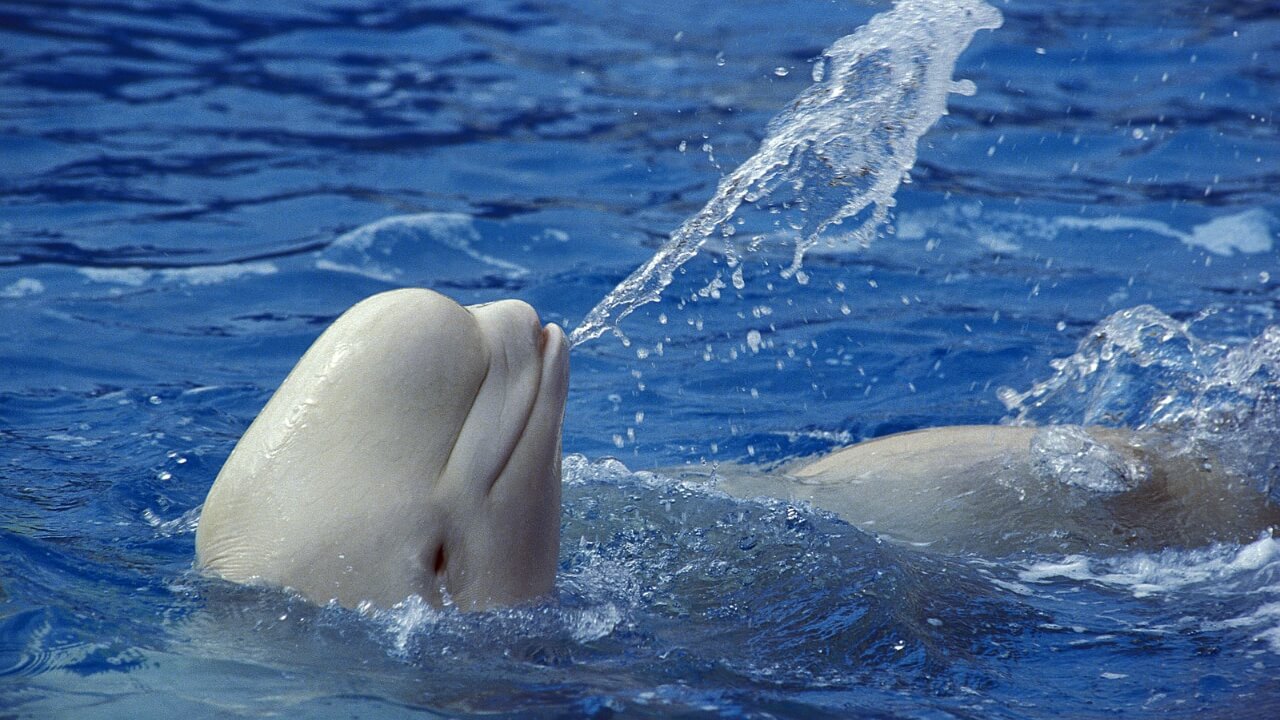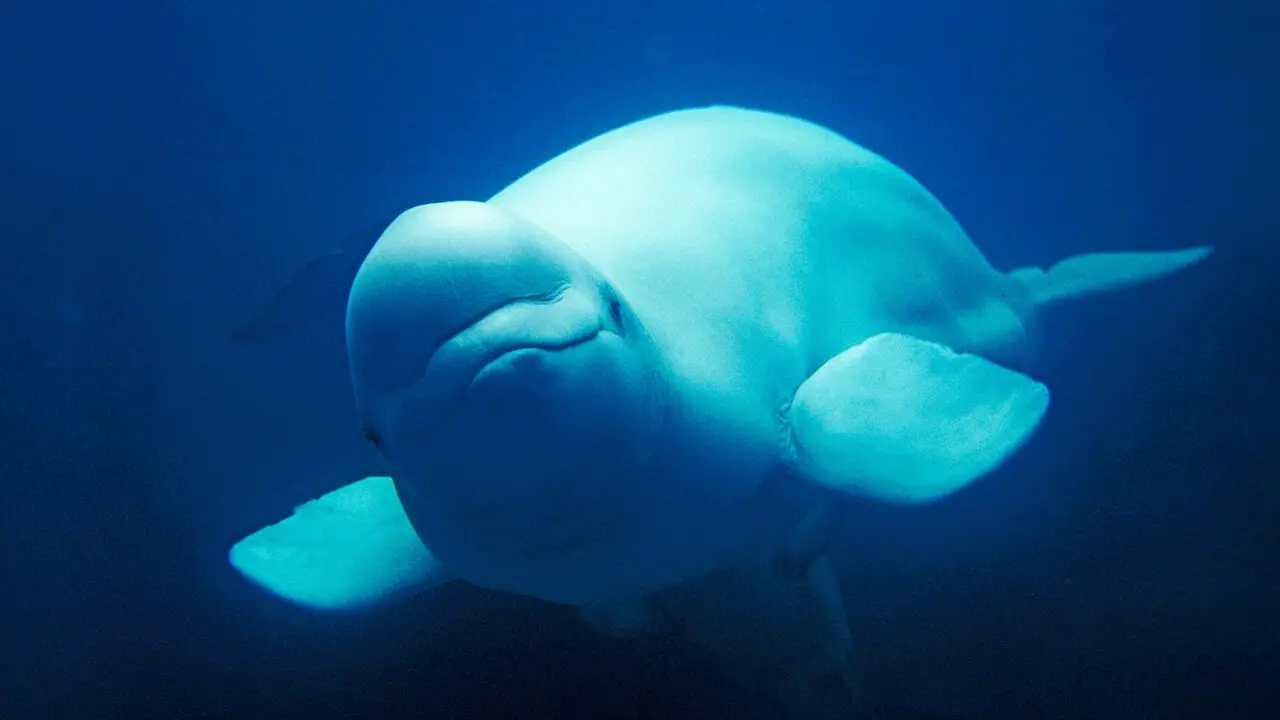The beluga whale is a cetacean found in the Arctic and sub-Arctic waters. It is well-known for its distinctive white color and is also known as a white whale. Like many other animal species, human activities and climate change are causing threats to belugas. However, it is currently not an endangered species and its conservation status on the IUCN Red List is Near Threatened. Here we gathered information about whether beluga whales are endangered or not, how many of them are left in the world, and why belugas are endangered.
Are Beluga Whales Endangered?
Beluga whales are not endangered. Their current status on the IUCN Red List is Near Threatened. Their population is stable, however, they are still considered to be at risk because of various factors. The habitat range of belugas cover regions where human activities are causing threat to their survival. These human activities include fishing nets (in which they often get stuck), oil and gas exploration, oil spills, and noise pollution because of vessel traffic.
Must Read: How Intelligent are Beluga Whales?
Beluga whales are also facing the issues of habitat degradation and entanglement in commercial fisheries gear in some regions of their habitat range. Additionally, overhunting is another reason that once caused a significant decline in their population.

Arctic Native communities in Alaska, Canada, Greenland, and Russia hunt belugas for food and commercial purposes. Climate change is another issue that is directly impacting belugas. They depend on the sea ice for existence, and sea ice is melting because of climate change.
How Many Beluga Whales Are Left In The World?
The current population of beluga whales is estimated between 150,000 to 200,000 individuals. The number of their recognized stocks is 22. The largest ones are found in the; Western Hudson Bay (55,000), Eastern Beaufort Sea (39,300), Eastern Canadian Arctic (21,400), Eastern Chukchi Sea (20,700), James Bay (14,500), Eastern Bering Sea (7,000 to 9,200), and White Sea (5,600).
Also Read in Details: Are Beluga Whales Friendly?
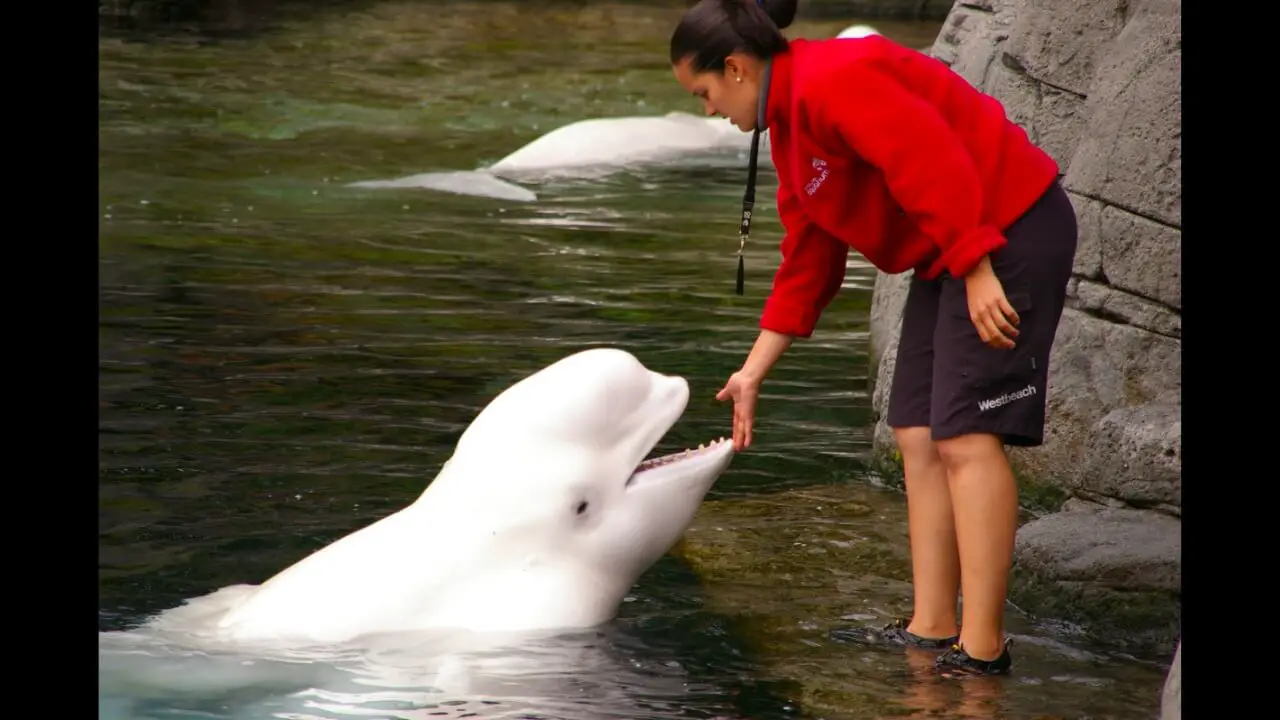
Why Are Beluga Whales Endangered?
Beluga whales are currently not categorized as endangered. However, they are facing many threats to their survival. These threats include:
Hunting
Beluga whales are hunted for a variety of reasons, especially for their meat and oil. Arctic Native communities in Alaska (USA), Canada, Greenland, and Russia excessively hunt them for meat, skin, blubber, and bones. Estimates show that about 1,000 individuals are hunted per year. The meat of beluga is an alternative food source for some local communities to replace beef, chicken, and pork that would otherwise be bought.
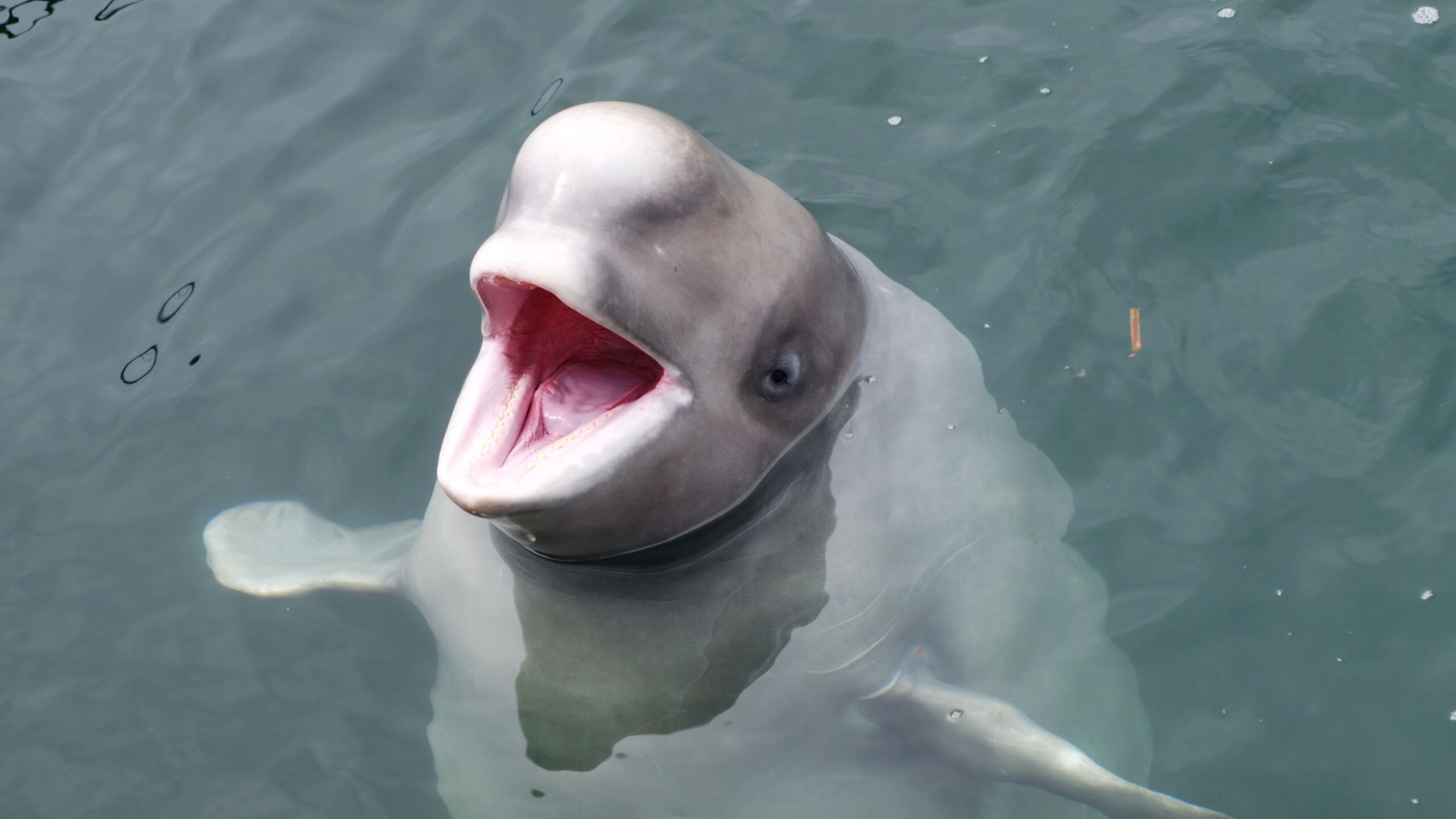
In Greenland, hunters commercially sell their skin (with blubber) to fish factories, which are used for making muktuk (traditional Arctic food). From a large beluga whale, about 44 pounds of meat, 110 pounds of muktuk, and 66 gallons of oil are obtained. The oil obtained from their blubber is used for cooking and as a fuel and lubricant. Their teeth and vertebrae are carved for ornamental purposes.
Contamination
Human pollutants contaminate the river and sea waters and pose a great threat to belugas, especially the populations that inhabit river estuaries. Chemical substances like DDT and heavy metals (lead, cadmium, and mercury) have been reported in individuals of the Saint Lawrence River population. In the brains, liver, and muscles of belugas, between 240 and 800 ppm of polychlorinated biphenyls (a highly carcinogenic or cancer-causing chemical compound) have been found.
These levels were highest in male individuals and significantly greater in populations found in river estuaries, while lower in the populations inhabiting the open sea. Evidence shows that these chemicals harm belugas because it causes cancers, reproductive disorders, and damage to the immune system. So it makes belugas more susceptible to health issues like tumors, ulcers, pneumonia, and bacterial infections.

Belugas found in the open sea have been found to have high levels of heavy metals (such as zinc, cadmium, mercury, and selenium) in their kidneys, liver, and muscles. Mercury is a special concern. In Beaufort Sea populations, the concentration of Mercury tripled from the 1980s to the 1990s. Belugas with large body sizes tend to have more mercury in their bodies than those with small body sizes. The reason is that large individuals spend more time in the open sea and eat code and shrimps that have more mercury.
Predation
Beluga whales become vulnerable to predators during the winter season when they are usually trapped in the ice and incapable of escaping back to open waters. In such situations, they become an easy target for predators like polar bears. An incident was documented in which a polar bear (with an estimated weight of 150 to 180 kg) captured a beluga weighing about 940 kg.
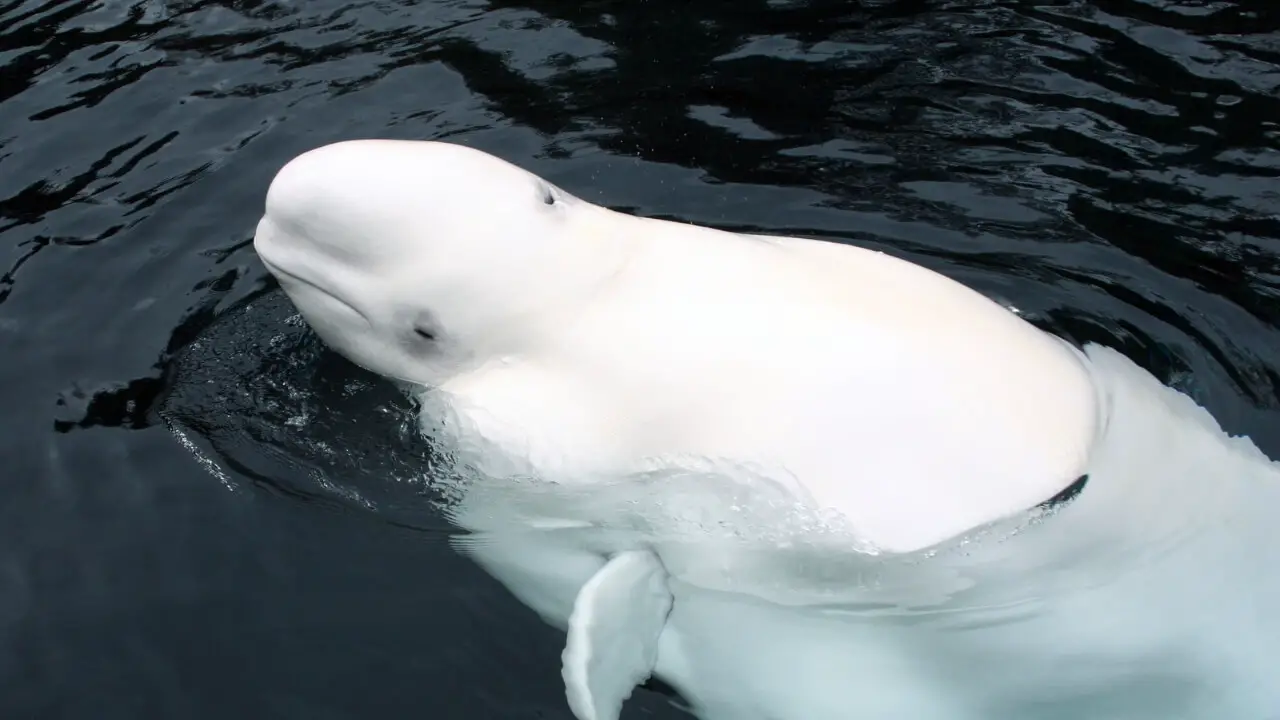
Killer whales are another major predator of belugas that kill them in all of their habitats (because killer whales are found throughout the world’s oceans). Attacks of killer whales on belugas are reported in Alaska, Canada, Greenland, and Russia. Belugas are not always able to detect the presence of killer whales to avoid them. Avoiding killer whales also makes them vulnerable to other hunters. In the presence of killer whales, belugas congregate in large numbers in shallow waters which let them to be hunted in flocks.
Diseases and Pathogens
Many diseases and pathogens (including bacteria, viruses, protozoans, and fungi) cause skin, respiratory, and intestinal infections in belugas. Herpesviruses, papillomaviruses, and brain inflammation known as encephalitis (caused by protozoan parasites Sarcocystis) have been found in belugas inhabiting the Saint Lawrence River. Captive individuals are susceptible to the bacterium Erysipelothrix rhusiopathiae which causes anorexia (loss of appetite), dermal plaques, and lesions that can lead to sepsis (blood poisoning). Such conditions can cause the death of belugas if not diagnosed and treated at a proper time.
Climate change
Climate change has indirect impacts on belugas. Increasing sea temperature, ocean acidification, melting of sea ice, and changes in ice coverage because of global warming and climate change can affect food availability and disturb their migratory patterns. Such changes can also negatively influence their ability to reproduce and raise their young.
Noise Pollution
Vessel traffic in the sea causes noise pollution that may be a threat to belugas. Belugas usually tolerate small boats, however, they are known to detect the presence of large ships from a distance of up to 50 km. To avoid such ships, they fastly move in the opposite direction or perpendicular for up to 80 km distances. Due to exposure to the ships’ noises, a significant decrease has been recorded in the calls among belugas (from 3.4-10.5 calls/min to only 0 or <1 calls/min). The presence of ships in their habitat leads to avoidance behavior in them that causes deep diving for feeding, the break-up of their social groups, and unsynchronized diving.
Habitat Degradation
Human activities in the habitat range of belugas, like oil and gas exploration, can cause degradation of their habitat. Due to such activities in the sea, they can lose suitable feeding and breeding grounds. It can disturb their life cycle and can harm their overall population size.
Overfishing
Overfishing in the habitat range of belugas can deplete them from their basic prey (fish and squid) and can lead to food scarcity and malnutrition. It can reduce their population and make them more vulnerable to other threats.

